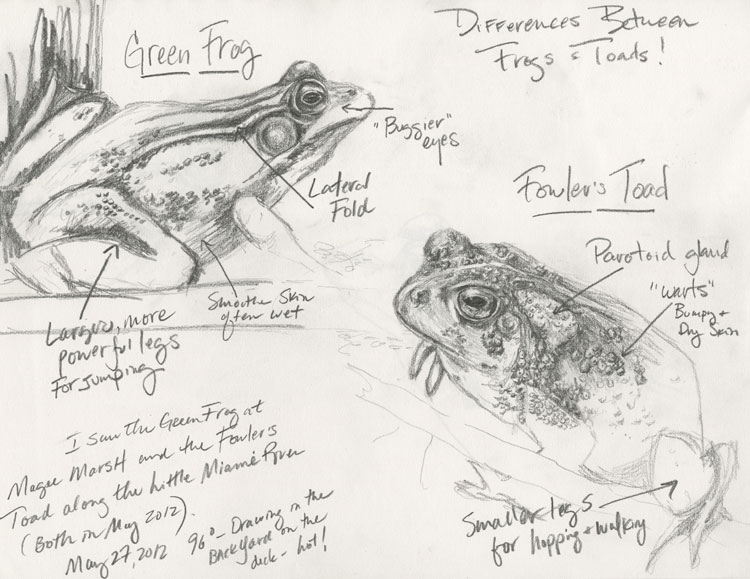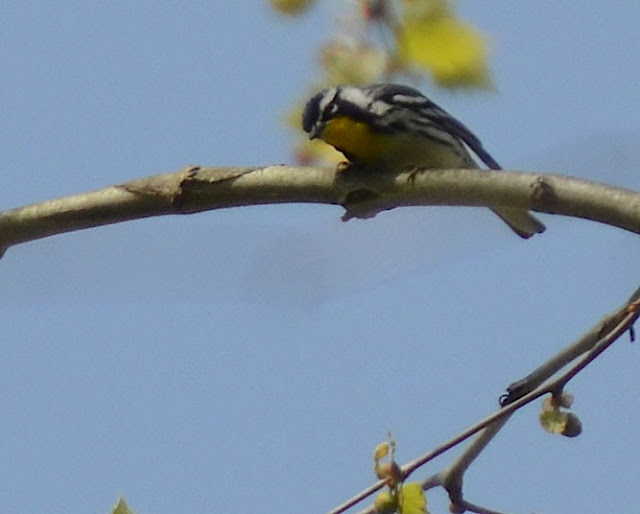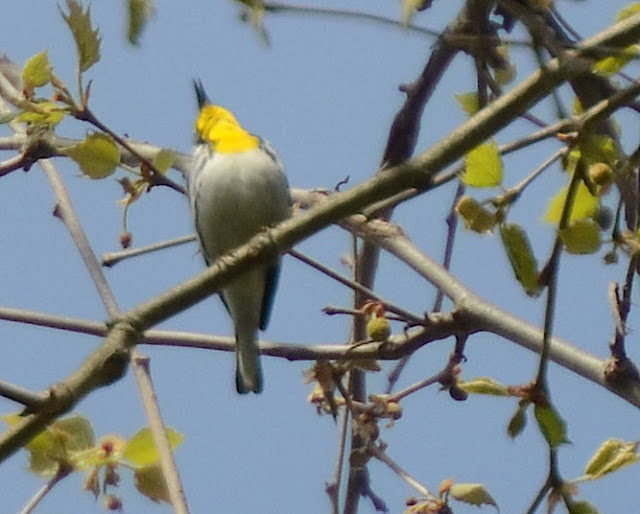Green Frogs (Rana clamitans melanota) and Bullfrogs (Rana catesbeiana) are both green, and a small Bullfrog can look a lot like a Green Frog, but if you look at the lateral fold, there is no mistaking the two. On a Bullfrog, the dorso-lateral fold curls around the tympanum....
Telling a male frog from a female frog
There is an easy trick for determining the sex of a Green Frog and a Bullfrog. Look at the tympanum behind the eye. Female tympanums are about the same size as the eye. Male's are almost twice as big!
Note: This little trick works only for Green Frogs and Bullfrogs. The tympanum on most other frogs and toads is slightly smaller than the eye.
What are the differences between a frog and a toad?
Scientifically, there really is no difference between a frog and a toad--both are amphibians in the order "Anura." Morphologically, however, you can see physical differences between the two, and because of that, scientists have classified them into different families. The following characteristics separate "true frogs" (family Ranidae) from "true toads" (family Bufonidae)...
- Skin Frogs usually have wet and smooth skin because they rarely leave the water. Toads usually have dry and bumpy or warty skin because they prefer to live in damp locations away from the water.
- Legs Frogs have long legs and feet, and they can jump far. Toads have shorter legs and can hop, but they can't jump that far. Toads tend to walk around or make little hops.
- Parotoid gland Some frogs are poisonous to the touch, but only toads have the large parotoid gland behind the eyes that secretes a toxin that can burn the mouth and mucous membranes of a predator.
- Body shape Frogs tend to be leaner and more streamlined for swimming. Toads are often described as being "chubby" or squat.
- Eggs Frogs usually lay eggs in clusters or mats. Toads tend to lay eggs in chains.
- Eyes Frogs are said to have more prominent or "buggy" eyes. Toads less so (for me, the bugginess of the eyes is harder to distinguish. They all look pretty buggy to me!).
These characteristics are generalities and blur quickly when you look at all the Anura families. For example, a Blanchard's Cricket Frog looks a little toady at first glance. He's bumpy and muddy looking and can be found away from water, but if you look for a Parotoid gland you won't find one, because he's a frog...not a toad. (Click here for a post on Cricket Frogs. Click here to learn about the Parotoid gland on a toad.) In Ohio, you can find the following Anuran families:
Ranidae ("true frogs") - Bullfrog, Green Frog, Leopard Frog, Pickerel Frog, Wood Frog
Hylidae - Gray Treefrogs, Chrous Frogs, Spring Peeper, and Cricket Frog
Bufonidae ("true toads") - American Toad, Fowler's Toad
Scaphiopodidae - Eastern Spadefoot Toad
For a complete list of Anuran families, click here.
Sources
- Minton, Sherman A (2001). Amphibians & Reptiles of Indiana, Indiana Academy of Science. ISBN 1-883362-10-5
- Platt, Carolyn V. (1998). Creatures of Change, An Album of Ohio Animals, The Kent State University Press. ISBN 0-87338-585-3
- Ohio Division of Wildlife, "Amphibians of Ohio Field Guide." Click here for a free online PDF of this guide.





















































